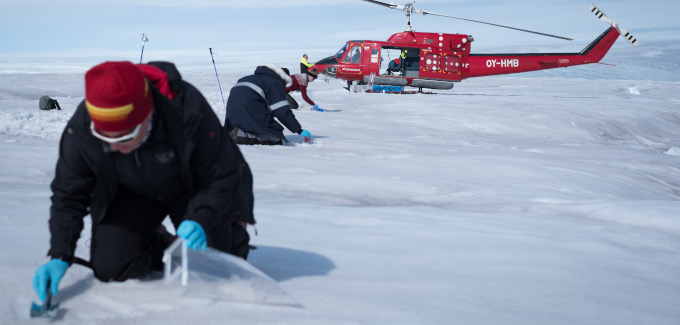
It has been shown that glacier algae are responsible for a significant portion of the darkening experienced by the Greenland Ice Sheet, for example in the >100,000 km2 dark zone on the western margin of the ice sheet. However, the development and distribution of glacier algae blooms on the Greenland Ice Sheet remains poorly understood.
The Cryo-Microbiology Group hypothesizes that the increased darkening of the Greenland Ice Sheet is a phenomenon that started in the past 150 years, e.g. due to the deposition of particles originating from industrial processes. The aim is to identify a glacier algae biomarker that can be traced in marine sediment cores, allowing the reconstruction of the temporal distribution of algae on the Greenland Ice Sheet.